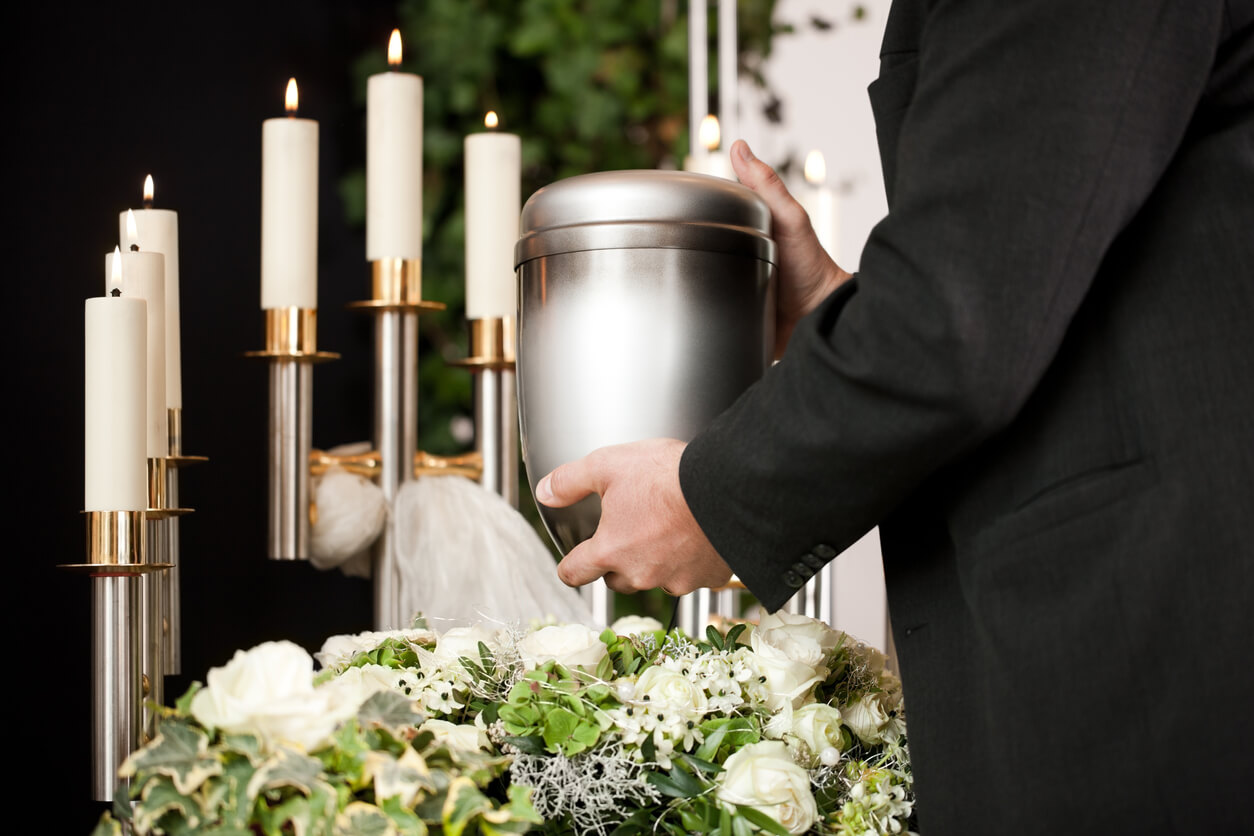There are a lot of decisions to make when planning your own eventual cremation (or a loved one’s cremation.) One of the most significant decisions regards the permanent location of the cremated remains.
Table of Contents
Here are some of the most common final resting places for cremated remains.
We’ll give the pros and cons of each choice and give you some alternative ideas for ashes that you may have never considered.
Ashes stored in cremation urns
Some families feel comforted keeping the remains of their loved ones close at hand. They may purchase a decorative urn and have the cremated remains sealed inside. The urn is typically given a place of honor in the home.
While families may like having a part of their loved ones close nearby, sometimes people worry about what will happen to the remains as they are passed down throughout the generations.
Scattering ashes
It’s common for people to scatter their loved one’s ashes at a significant place. Many families gather for an “ashes ceremony” and say a few parting words as the remains are dispersed.
The benefit of this permanent resting place is that it can be done on private land and some public land (both with permission from the landowner or the government entity overseeing the space).
However, unless the remains are dispersed in a scattering garden, there may be no permanent marker identifying the spot.
Remains placed in a columbarium niche
While our first two options (storage in an urn and scattering) are the least expensive, the Catholic church encourages parishioners to choose a consecrated ground for the interment of ashes.
One of those options is a columbarium niche, a small space created to hold cremation urns. The space is labeled on the outside. And families can visit and leave behind flowers or other small gifts.
Remains buried in a cemetery plot
Another choice for the interment of ashes includes burying ashes in a burial plot. This can be done at a typical cemetery or a Catholic cemetery. Depending upon the type of cremation urn used, the family may be required to purchase an underground vault that will hold the cremated remains. Like any other burial, the family can commission a headstone to mark the location of the cremated ashes.
Families interested in a more natural burial site may select to have the cremated remains in a natural burial ground. Most of these types of green cemeteries require the use of a biodegradable urn.
Other options for your loved one’s ashes
Even though the scope of this article is about the interment of ashes, you can also use a small portion of the cremation ashes to place in cremation jewelry. Some families commission gems, diamonds, or glass artwork that incorporate a tiny bit of ashes in the design.
Do you need help with your ashes service?
Contact Philadelphia Cremation Society for help planning an ashes ceremony.
If you plan to scatter, bury, or inter your loved one’s ashes, the Philadelphia Cremation Society can assist you in planning the service. We offer direct cremation services in regions of Pennsylvania and New Jersey. Contact us today to learn about the services we offer.





